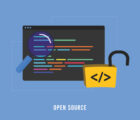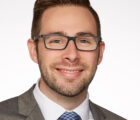
A few weeks ago, I spoke with Andrew Golub, FSA, CERA, who, in addition to being the chief analytics officer at Beecher Carlson, has the distinction of being the first person to attain The CAS Institute’s Certified Specialist in Catastrophe Risk (CSCR) designation through examination. It was gratifying to hear him talk about the transparency of the program and how it has increased his ability to unpack what is in the “black box” and learn more about the workings of models. Following is part of our talk.
Amy Brener: Let’s start by telling me a little bit about yourself. I know that you are a Fellow of the Society of Actuaries and a CERA. How does being an actuary help you do your current job?
Andrew Golub: I think actuarial training is about two things. One is baseline knowledge, a breadth of contextual information that you have been trained on. That allows you to apply technical methods to real-world problems, whether those methods are from mathematics, statistics, basic finance, interest theory, or balance sheet management for risk-bearing entities. All of those are skill sets that are useful. So having a baseline knowledge that can allow you to be fluent in risk models, decision making around risk and financial optimization is one element.
The second part of being an actuary that is helpful is the critical thinking component. I believe that the actuarial profession, through its required course work, has done a really good job over the years of training people who are not just designed to check a regulatory box. Actuaries do add substantial value to the insurance industry through their interactions with the regulatory system, but they are also able to help solve the types of challenging risk-related problems which require you to look across different disciplines to find the best solution, and to implement that solution. So, I would summarize it as skill sets plus problem solving.
Brener: You recently completed the examinations and earned the iCAS CSCR (Certified Specialist in Catastrophe Risk) designation. What prompted you to take those exams?
Golub: Catastrophe modeling has been part of my job on some level for most of my career. I began in the underwriting business unit of our company, which had underwriting authority on behalf of carriers to assess and price risk associated with construction projects. And immediately upon our beginning that business … catastrophe modeling came up. The carrier partners we were doing business with were leveraging tools [produced by cat modeling software companies] like RMS and AIR, so it was incumbent upon us to get involved with that overall process, license the software, become astute at using it, etc.
That was the beginning of my career and throughout the progression of my work life, catastrophe modeling has been involved in my roles at varying levels. So, when this new educational program was launched, it caught my eye. I had worked with catastrophe model outputs from the vendors for many years but had always viewed their underlying methodologies as opaque. If I had to explain with rigor how the software translates exposure data into loss estimates, it was challenging. I could articulate basics but did not have as deep of an understanding of the underlying science as I wanted to have.
These courses formed a continuing education program that elucidates some of those inner workings and provides some level of insight into at least where to look, if you want to research the scientific assumptions related to the modeled frequency or severity of cat events. It was really appealing. You can get materials from the vendors’ documentation libraries, but those libraries are not set up to be optimized for this purpose. Rather than having to organize some sort of educational track myself, having organizations I was already familiar with, such as iCAS and The Institutes, was great. The program put together clear and accessible educational materials which intersected with a topic that I was interested in. That appealed to me.
Brener: When we developed this credential, we deliberately made it platform-agnostic, for exactly the reason that you are stating. In fact, we had people from RMS, AIR and CoreLogic working on it. So, it is clear that the modeling companies also see a value in this and understand that this is complementary to the certifications they offer, as opposed to being in competition with it. I appreciated hearing you talk about transparency and that the program increased your ability to unpack what is in the black box because you gained more knowledge about what goes into the models. I’m gratified to hear that because that was one of the aims of the program.
Brener: What would you tell someone who works for you about the value of these exams?
Golub: I would definitely recommend this to someone who is in a place in their life where they are looking for a continuing education program to dedicate time to. That is always a personal decision. We do not like to bully people into shifting their professional vs. personal life balance … .
Even if you are not in a natural catastrophe focused role, it still provides valuable insights into how to tackle problems. One example would be leveraging the framework and the thought process that the innovators within the catastrophe modeling space took to quantify risk from natural perils like hurricane and earthquake and using it as a case study to address other problems where there is no historically defined model development path, such as cyber liability. In that case, you have something that shares some properties with natural catastrophes in that there is a low annual probability of an occurrence, but when you do have an occurrence, it can be very severe. There is not a clear-cut actuarial playbook for how to address that, and most of the analytical tools accessible to P&C actuaries are not going to apply well because they rely on large volumes of claims data, which is not necessarily in existence for the most extreme types of cyber losses.
The way people were able to figure out an approach that did not exist 40 years ago to quantify hurricane exposure for an insurance portfolio provides lessons in critical thinking and how to navigate through multidisciplinary problems and embed conclusions into a consolidated framework for quantifying risk.
This credential provides a lot of value for anyone in the analytical space working on property-casualty problems. But if you are a practitioner solely focused on catastrophe modeling, I think it is doubly important to have some source of shared information you can access, even if it is shared with people from competing firms. A credential program like this has a lot of promise when it comes to serving as that focal point, in my opinion.
Brener: I know that you are familiar with our Certified Specialist and Predictive Analytics (CSPA) credential. Who would you recommend that credential to?
Golub: I can think of two groups of practitioners that would materially benefit from the CSPA. If you are a new insurance analytics professional who does not have practical experience working with insurance data and you are interested in building predictive models, or if you are in a role where you have to support the building of predictive models, I think it looks valuable. I would also potentially recommend it to someone who has a traditional actuarial background and a good knowledge of insurance data but is not yet really familiar with the statistical underpinnings of calibrating multivariate models, GLMs and so forth.
Brener: Great. Is there anything that you would like to add that I did not touch upon?
Golub: I am impressed by the amount of work that was put into this program, which I think is needed. Some of the course readings mentioned that many catastrophe modeling practitioners look at the actuarial profession and say, “We wish we had a similarly standardized set of best practices, which even people at competing firms can agree on, and a set of baseline educational knowledge that we would expect practitioners within this field to have mastered.” This is definitely a strong move in the right direction for this blossoming field of natural catastrophe modeling, which is already very prevalent and seems as if it will be of increasing importance in the years to come.
Brener: Super! Thank you so much for spending time with me.
If you are interested in learning more about how credentials and continuing education in predictive modeling or catastrophe risk from The CAS Institute can benefit your career, please visit our website, TheCasInstitute.org.











